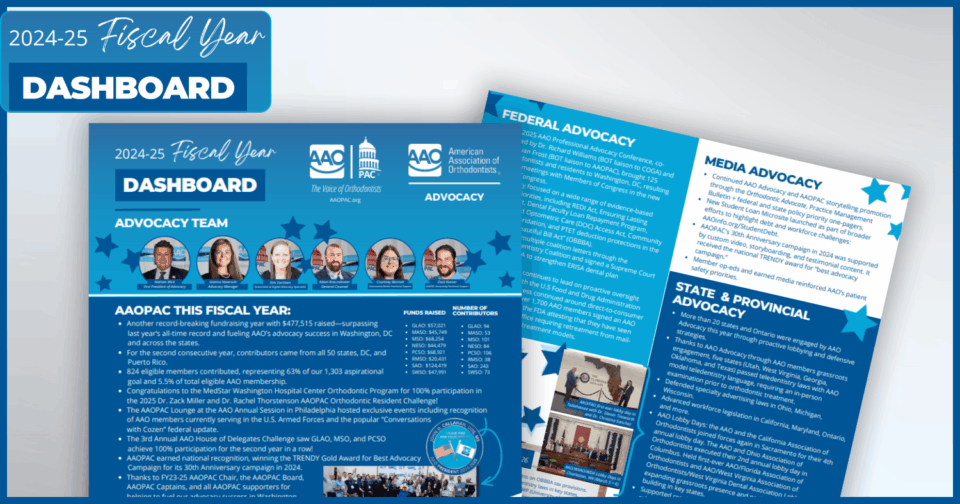Over the course of the past few months, there have been a lot of questions about a change to the Code on Dental Procedures and Nomenclature, also known as the CDT code. For background, the Council on Orthodontic Health Care (COHC), the AAO body responsible for making recommendations concerning third party reimbursement plans, polled AAO Members in the fall of 2020 to gauge whether the then-current CDT Code was meeting orthodontists’ needs. Many respondents to this survey selected “Determining when a case is Limited vs. Interceptive” and “Determining when a case is Limited vs. Comprehensive” as two of their top three areas of concern with the code.
For this reason, the AAO suggested, and the ADA’s Code Maintenance Committee voted to approve, deleting the Interceptive Orthodontic Treatment subcategory nomenclature, descriptor, and codes D8050 and D8060, as well as revising the definition of Limited Orthodontic Treatment. Among the unintended consequences of this change, some dental insurance companies and state Medicaid offices failed to make proper adjustments to their adjudication processes and claims payments.
The AAO has provided resources for members (including an updated FAQ document and CDT checklist) that demonstrate how the new codes are intended to function, answer frequently asked questions, explain how to negotiate network provider agreements, and train employees on coding strategies. Nonetheless, we understand that this decision has had adverse effects on some of our members’ practices, and we are working to rectify the situation. COHC would like to remind members that all orthodontic treatment codes may be used more than once for the treatment of a particular patient, depending on the particular circumstance. This includes “Comprehensive Orthodontic Treatment” procedure codes, when appropriate. For example both Phase 1 treatments and Phase 2 treatments can be coded under comprehensive codes. The entire Orthodontics Section of the code can be found in the AAO’s At-A-Glance Guide to CDT 2022.
As you are likely aware, the AAO does not control the insurers’ policies and how they choose to handle the switch from Interceptive to Limited coding. However, when these issues were first identified after the change was announced in July, the AAO began communicating with the payers, expressing members’ concerns and requesting they make necessary preparations. Beginning in October, the AAO initiated discussions with organizations including the National Association of Dental Plans, and this dialogue continues as we work to educate payers on how this change in CDT codes affects our members and their patients.
While the AAO cannot act unilaterally on behalf of our members to negotiate higher payments, we accept the responsibility for advocating on behalf of our members, and we are unconditionally committed to these efforts.
In the meantime, AAO members can share their thoughts, opinions, and inquiries concerning CDT changes via the Dental Benefits Comment Box, participating in surveys, or contacting their COHC representative. We appreciate the swift feedback from our members on this issue, and we will communicate additional updates in the near future.



